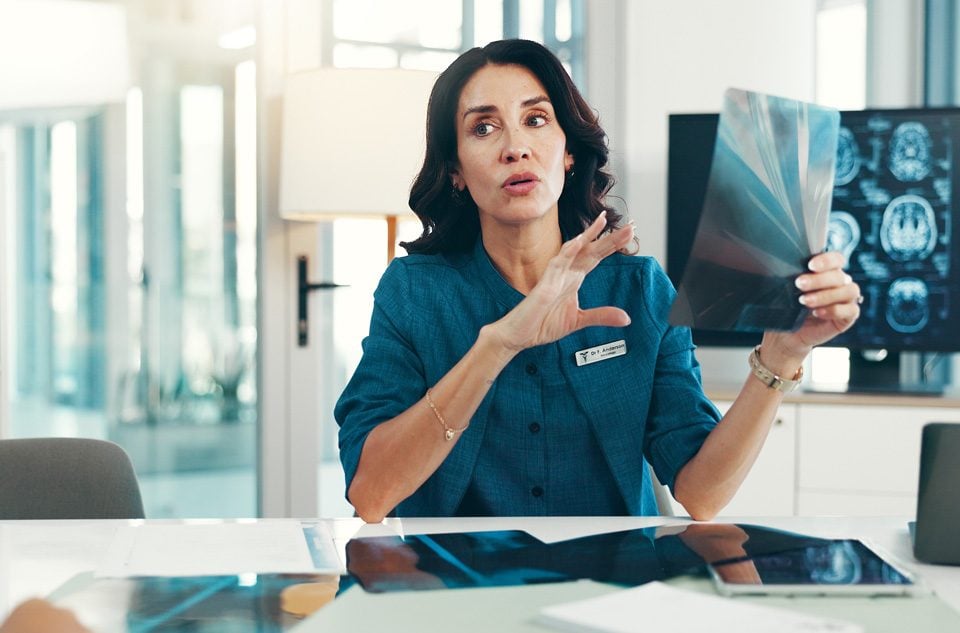We were fortunate enough to be able to sit down with Javad Parvizi recently for an interview. Javad Parvizi, MD is a professor of Orthopedic Surgery at Rothman Institute at Thomas Jefferson University. He has been in practice for over 15 years, doing mostly hip and knee replacement with an interest in periprosthetic joint infection.
“We are in desperate need of innovation that will help us to do better for these patients,” Dr. Parvizi told us. “But what we also face is diagnosis of periprosthetic joint infection is very difficult. It is difficult for two reasons.
“One is because the joint replacement, when it gets infected, is associated with biofilm formation, whereby microorganisms are hiding under the umbrella of glycocalyx, difficult to access, they’re not playing tonic for us to pick them up.
“Second is that some of these organisms internalize into osteoblasts and it’s very difficult to get to them and hence the whole concept of chronic osteomyelitis. Then there is the issue of diagnosing the actual infection and isolating the pathogen. What’s available for us is the old, and if I may say, primitive technique of culture. It is unreliable on many accounts. One is because you have to take samples from representative areas, you then have to transfer them immediately to the lab, the sample has to then get processed as soon as possible. Then you have to put that sample on the right medium to isolate the organisms.
“Because of that, either we don’t isolate the organisms at all, about 50% of PJI are culture negative across the globe. My institution where we pay huge amounts of attention to this issue, we have about 35% culture negative infections. Still, very challenging. One in three case, doesn’t have the infecting organism identified.
“The major shortfall of biomarkers is that they diagnose the problem but they don’t tell you what the infecting organism is. Next generation sequencing looks at the quantity of DNA that’s in the samples, will run that against the phylogeny of bacteria and fungi and then it will tell you which bacteria or fungi exist there.
“The second difference between PCR and next generation sequencing is, in PCR, you have to know what organism you are looking for so you can design your primer for that organism, whereas in next generation sequencing, the DNA material that you get will be compared to the genome library, and then the type of bacteria would be given to you.
“I heard about pathogenius / Microgen dx about two years ago, when a colleague of mine approached me to talk to me about this technology that exists. He’s an orthopedic surgeon in Delaware, who’s been sending some samples to Pathogenius/ Microgen DX and when he shared his experience, I was very, very, impressed.
Majority of the people that deal with periprosthetic joint infection, have been waiting for technology like this. I think timing is great. Pathogenius/MicroGen DX gives you a very useful information of what the organism is, and by the way, it can be gram-negative, gram-positive in some samples, they’ve isolated fungi. In the near future, we’ll give you the antibiotic resistance of the organism, which will certainly have a role in guiding your clinical decision making and management of the patients.”
Dr. Parvizi can be contacted at the following:
Javad Parvizi, MD
925 Chestnut Street
5th Floor
Philadelphia, PA 19107
(800) 321-9999
https://www.rothmaninstitute.com/physicians/javad-parvizi-md
http://hospitals.jefferson.edu/find-a-doctor/p/parvizi-javad/
To learn more about MicroGen DX, explore the links below.
- https://www.microgendx.com/
- https://www.facebook.com/microgendx/
- https://twitter.com/microgendx
- https://www.instagram.com/microgendx/
- https://www.tumblr.com/blog/microgendx
*– Editor’s note: At the time of this interview, MicroGen DX, LLC was operating under the name Pathogenius, which is why in the video of the interview (link below) he refers to it as Pathogenius.




